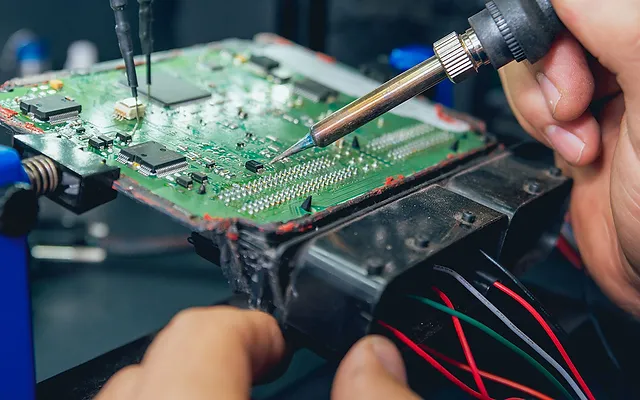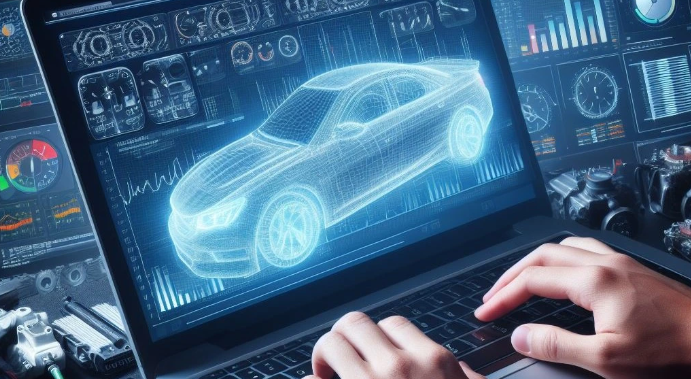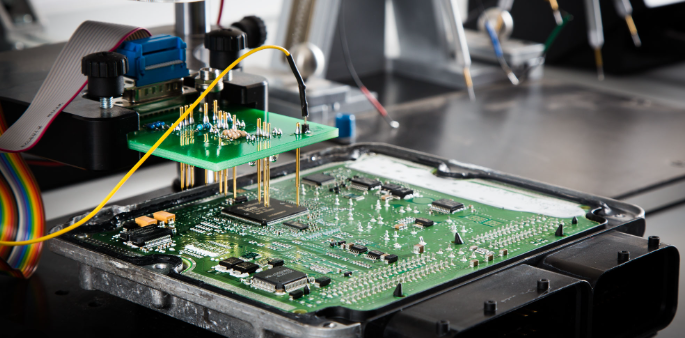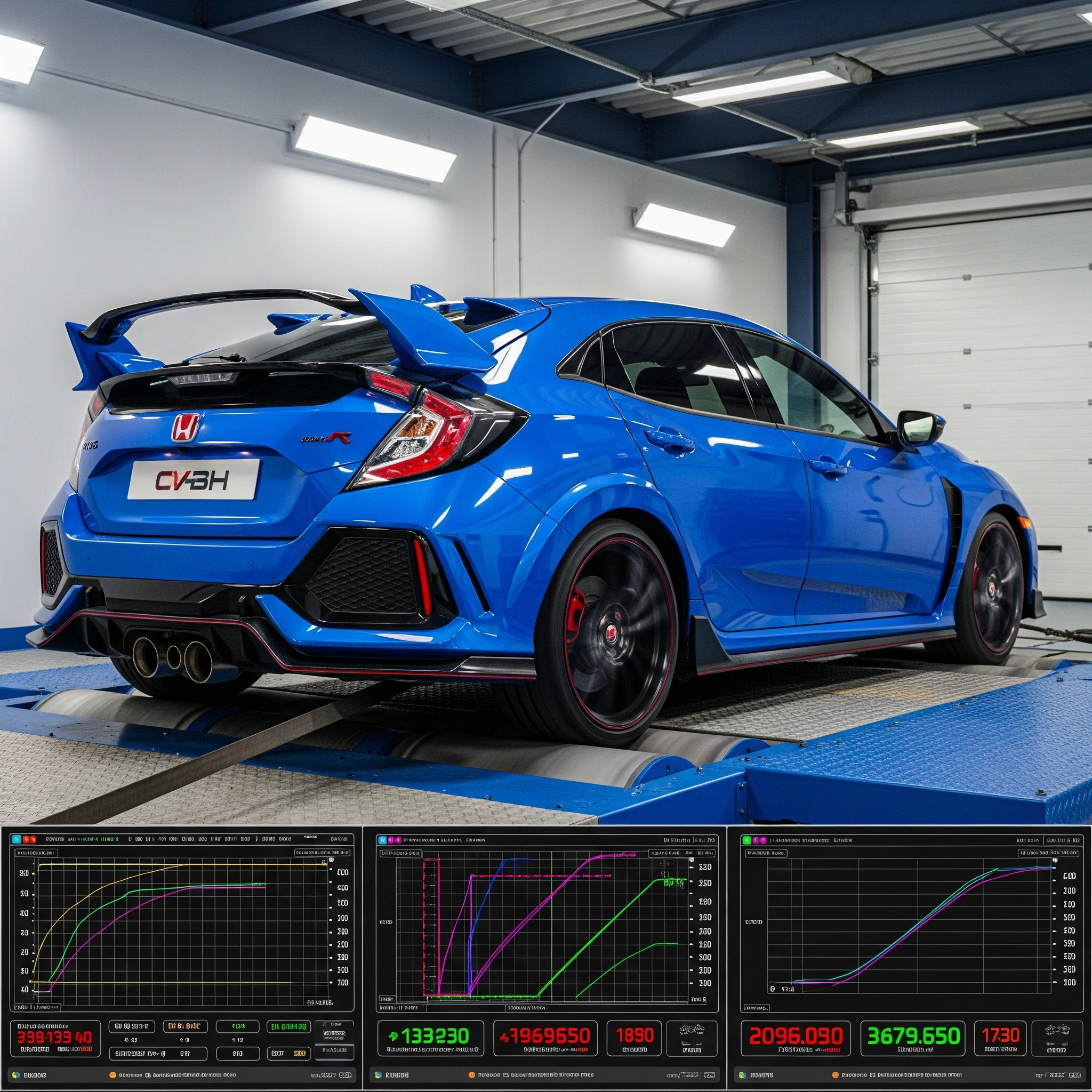1. What is an Engine Control Unit (ECU)?
An Engine Control Unit (ECU), also known as an Engine Control Module (ECM) or Powertrain Control Module (PCM), is an electronic device installed in modern vehicles to manage and control the engine’s operations. The ECU processes data from numerous sensors and actuators strategically placed throughout the engine and other vehicle systems. Based on this information, the ECU makes real-time adjustments to optimize engine performance, fuel efficiency, emissions, and more.
2. The Components of an ECU
An ECU is a complex piece of engineering, composed of various components that work harmoniously to ensure smooth engine operation. The key components of an ECU include:
a. Microprocessor: The microprocessor is the “brain” of the ECU, responsible for processing data, executing instructions, and controlling various functions.
b. Memory: ECUs have two types of memory – Read-Only Memory (ROM) and Random-Access Memory (RAM). The ROM contains pre-programmed data and instructions, while the RAM stores temporary data during operation.
c. Input Sensors: These sensors collect data from various engine parameters, such as engine temperature, throttle position, air intake, and oxygen levels.
d. Output Actuators: Actuators are responsible for executing the ECU’s commands, controlling systems like fuel injectors, ignition coils, and idle air control valves.
e. Communication Interface: The communication interface allows the ECU to exchange data with other vehicle systems, such as the transmission, anti-lock braking system (ABS), and airbag system.
3. Working Principles of an ECU
The ECU operates based on a continuous feedback loop, where input data from various sensors are analyzed to make real-time adjustments. The working principles of an ECU can be summarized as follows:
a. Data Collection: Sensors monitor engine parameters and collect data, including engine speed, temperature, throttle position, and oxygen levels.
b. Data Processing: The microprocessor processes the collected data and compares it to the pre-programmed values stored in the ROM.
c. Decision Making: Based on the comparison, the ECU makes decisions to adjust fuel injection, ignition timing, air-fuel ratios, and other parameters.
d. Output Control: The ECU sends commands to the output actuators to control engine components and ensure optimal performance.
e. Continuous Feedback: The process repeats continuously, allowing the ECU to make rapid adjustments as driving conditions change.
4. Functions of an ECU
The ECU performs a myriad of functions that are vital for the engine’s optimal performance:
a. Fuel Injection Control: The ECU precisely regulates the amount of fuel injected into the engine cylinders, based on sensor inputs, to achieve the desired air-to-fuel ratio for efficient combustion.
b. Ignition Timing Control: By adjusting the ignition timing, the ECU optimizes the spark plug firing to ensure efficient combustion and maximize engine power.
c. Idle Speed Control: The ECU maintains a stable and consistent idle speed by controlling the throttle position and fuel delivery during idling.
d. Turbocharging Control: In turbocharged engines, the ECU manages the turbo boost pressure to enhance engine performance without compromising reliability.
e. Emission Control: The ECU monitors and adjusts various engine parameters to meet emissions standards and reduce harmful pollutants in the exhaust gases.
f. Throttle Control: The ECU manages the throttle position to regulate engine power output and provide the desired response to driver input.
g. Transmission Control: In vehicles with electronic transmissions, the ECU works in conjunction with the transmission control module to optimize gear shifts and improve overall drivability.
5. Importance of ECUs in Modern Vehicles
The significance of ECUs in modern vehicles cannot be overstated. Here’s why they are crucial:
a. Performance Optimization: ECUs play a central role in optimizing engine performance, enabling vehicles to deliver power efficiently and smoothly.
b. Fuel Efficiency: By precisely controlling fuel injection and other engine parameters, ECUs contribute to improved fuel efficiency and reduced fuel consumption.
c. Emission Control: With stringent environmental regulations, ECUs help reduce harmful emissions, making vehicles more environmentally friendly.
d. Diagnostics and Troubleshooting: ECUs continuously monitor engine performance and provide valuable diagnostic codes that aid in identifying and resolving issues promptly.
e. Adaptive Systems: Advanced ECUs employ adaptive systems that adjust engine parameters in real-time based on driving conditions, ensuring optimal performance in various scenarios.
f. Enhanced Drivability: ECUs are integral to providing a seamless driving experience by regulating engine responses and ensuring smooth acceleration and deceleration.
6. Types of ECUs
There are different types of ECUs designed to cater to specific vehicle functions:
a. Engine Control Module (ECM): The primary ECU responsible for managing the engine’s performance, fuel injection, ignition timing, and emission control.
b. Transmission Control Module (TCM): This ECU is responsible for controlling automatic transmissions, optimizing gear shifts, and ensuring smooth transitions.
c. Airbag Control Module (ACM): The ACM is dedicated to managing the vehicle’s airbag system and deploying airbags in the event of a collision.
d. Body Control Module (BCM): The BCM manages various electrical systems in the vehicle’s body, including lighting, power windows, and door locks.
e. Antilock Braking System (ABS) Control Module: The ABS control module is in charge of the vehicle’s anti-lock braking system, ensuring safe and stable braking.
7. Advancements in ECU Technology
Over the years, advancements in electronics and computing have revolutionized ECU technology:
a. On-Board Diagnostics (OBD): OBD systems, such as OBD-I and OBD-II, have become integral to modern ECUs, enabling standardized diagnostics and fault code retrieval.
b. Engine Mapping: Sophisticated engine mapping algorithms in modern ECUs allow for precise control of engine parameters, optimizing performance and efficiency.
c. Real-Time Adaptation: Advanced ECUs use real-time adaptive systems to adjust engine behavior based on sensor inputs and driving conditions.
d. Connectivity: With the advent of connected vehicles, ECUs are now equipped with communication interfaces to exchange data with other vehicle systems and external devices.
8. Future Outlook for ECUs
The future of ECUs is promising, with continuous research and development leading to groundbreaking innovations:
a. Electrification: As electric and hybrid vehicles become more prevalent, ECU technology will evolve to accommodate the specific requirements of these alternative powertrains.
b. Autonomous Driving: ECUs will play a crucial role in the development of autonomous driving, managing complex algorithms and sensor inputs for safe and efficient self-driving systems.
c. Artificial Intelligence: Integration of artificial intelligence into ECUs will enable dynamic adaptation and learning, enhancing performance and efficiency further.
d. Cybersecurity: With the increasing connectivity of vehicles, ECUs will prioritize robust cybersecurity measures to protect against potential threats and hacking attempts.
Conclusion
Engine Control Units (ECUs) are the silent orchestrators that govern the heart of modern vehicles – the engine. Their pivotal role in optimizing performance, fuel efficiency, and emissions control cannot be overstated. Understanding the components, functions, and importance of ECUs is essential for car enthusiasts, mechanics, and automotive professionals. As technology continues to advance, ECUs will remain at the forefront of automotive innovation, shaping the future of mobility with efficiency, intelligence, and reliability. Embrace the world of ECUs, and you’ll gain a newfound appreciation for the incredible electronic brains that drive our cars to greater heights of performance and sustainability.
For blog on Ecu tuning & remap – https://reynlab.com/blog/ecu-tuning-and-remap/
For course on Ecu tuning & remap – https://reynlab.com/course/ecu-tuning-and-remap-course/
Related Courses
- Webinar
- Includes Certificate
- Webinar
- Includes Certificate
- Webinar
- Includes Certificate







